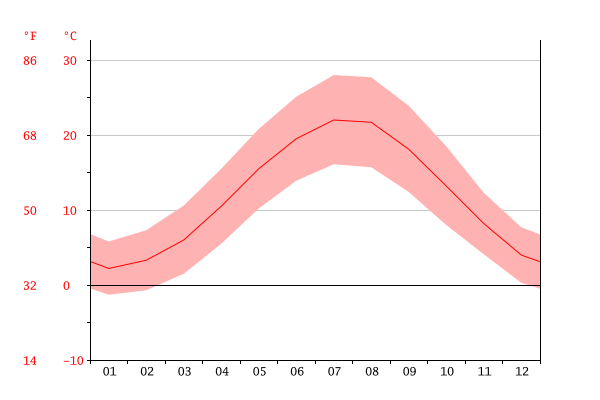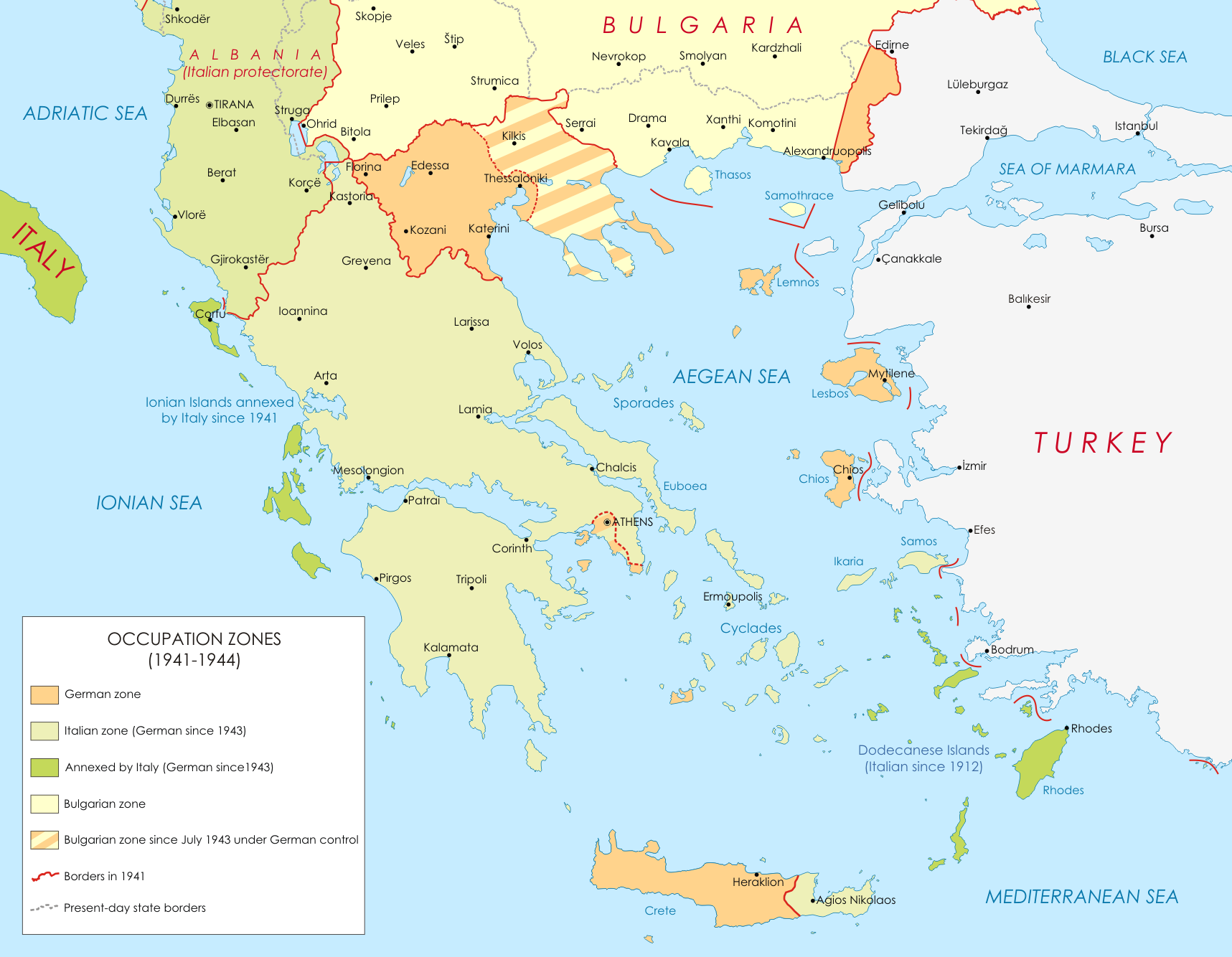Vathylakkos, Drama on:
[Wikipedia]
[Google]
[Amazon]
Vathylakkos ( el, Βαθύλακκος (meaning "deep ditch"), bg, Ко̀вица, Ко̀вища, tr, Kovitsa) is a village in the Drama regional unit,
Monastiraki
The region has abundant marble deposits.
 The driest month is August, with 23 mm of rainfall. In November, the precipitation reaches its peak, with an average of 67 mm.
The driest month is August, with 23 mm of rainfall. In November, the precipitation reaches its peak, with an average of 67 mm.
 The warmest month of the year is July, with an average temperature of 22.0 °C. At 2.2 °C on average, January is the coldest month of the year.
The warmest month of the year is July, with an average temperature of 22.0 °C. At 2.2 °C on average, January is the coldest month of the year.
 The difference in precipitation between the driest month and the wettest month is 44 mm. The variation in annual temperature is around 19.8 °C.
The difference in precipitation between the driest month and the wettest month is 44 mm. The variation in annual temperature is around 19.8 °C.
 In early period of Ottoman archives according to Ottoman tax registers "''Muhasebe-i Vilayet-i Rum İli Defteri''" dated 1530 which was not a census, for various reasons, a big amount of the population (women, children, military) is out of record the region known as Kozniçe. Kozniçe has ''1 Muslim hane''(household) and ''2'' ''mücerred''(single male) also ''25 hane'' and ''6 mücerred'' is ''Gebran(Christian) taxpayers''Demography and settlement in ''Paşa Sancağı Sol-Kol'' region according to ''Muhasebe-i Vilayet-i Rumeli Defteri'' dated 1530, H. Yeni p.41, p76
In early period of Ottoman archives according to Ottoman tax registers "''Muhasebe-i Vilayet-i Rum İli Defteri''" dated 1530 which was not a census, for various reasons, a big amount of the population (women, children, military) is out of record the region known as Kozniçe. Kozniçe has ''1 Muslim hane''(household) and ''2'' ''mücerred''(single male) also ''25 hane'' and ''6 mücerred'' is ''Gebran(Christian) taxpayers''Demography and settlement in ''Paşa Sancağı Sol-Kol'' region according to ''Muhasebe-i Vilayet-i Rumeli Defteri'' dated 1530, H. Yeni p.41, p76
/ref>''.'' In the same way, it is the one of 30 mixed villages with Muslim and non-Muslims which is total 53 village in Drama rural region. In later period of Ottoman archives the village known as Kuyçe then, in final period of Ottoman archives and in Turkish Republic archives the village known as Koyca. After the first Balkan war in 1913 village remains within the borders of Bulgarian but after the second Balkan war Greece gain the territory .
 Because of
Because of
Halitpaşa
and Yağcılar in Akhisar in Manisa, Kadıköy in Keşan and some villages of
 During the World War II the region was occupied by Bulgarian Army between 1941 and 1944 as most of Thrace.
During the World War II the region was occupied by Bulgarian Army between 1941 and 1944 as most of Thrace.
church
which converted some part of an old mosque, and only one classroom inactive school. Although there is no business in the village, public transportation facilities is limited. Most of villagers migrated abord because of lack of business facilities as a result of there is small number of young people in the village.
File:Vathylakkos in Drama.jpg, Vathylakkos
File:View of Vathylakkos in Drama.jpg, View of East side from Vathylakkos in Drama
File:Square of Vathylakkos.jpg, Square of Vathylakkos
File:Vathylakkos in winter.jpg, Vathylakkos in winter
File:School of vathylakkos.png, Inactive school of Vathylakkos
File:School of Vathylakkos.jpg, School of Vathylakkos
File:Assumption of Mary Orthodox Church.JPG, Assumption of Mary Orthodox Church in Vathylakkos Drama
File:Church of Vathylakkos.jpg, Church of Vathylakkos
File:Chapel .jpg, Chapel
File:Ruins from period of occupation during World War ıı.jpg, Ruins from period of occupation during World War ıı
Association of the exchanged Turkish people (in Turkish)
Tarihi süreçte mübadelenin sebepleri ve Lozan’daki mübadele konusu (in Turkish)
Türk hikayesinde mübadele, F.Sakallı (in Turkish)
Mübadele tarihinden sayfalar (in Turkish)
1997 Βαθυλακκος-Δραμας
Association's album of trip Vathylakkos in 2011
Religious and demographic development in the southwestern Rodope Mountaıns in the second half of the fifteenth century: A case study of the ''Tahrir'' Register of 1478, A. CHMIEL
History of Drama
(Greek) Populated places in Drama (regional unit) Drama, Greece
Eastern Macedonia and Thrace
Eastern Macedonia and Thrace ( el, Ανατολική Μακεδονία και Θράκη, translit=Anatolikí Makedonía ke Thráki, ) is one of the thirteen administrative regions of Greece. It consists of the northeastern parts of the coun ...
region, northern Greece. It was formerly known as ''Kovitsa'' ( Greek: Κόβιτσα) until 1927.
The village is part of the community of Monastiraki within the municipality of Drama.
Population
Vathylakkos had a population of 98 in the 2011 census differ from population of 85 in the 2001 census.Geography
Village is situated in the mountains Bozdag, has altitude about 500 metres from the sea level and about 10 kilometers north of the town of Drama, oveMonastiraki
The region has abundant marble deposits.
Climate
The climate is warm and temperate in Vathylakos. The rainfall in Vathylakos is significant, with precipitation even during the driest month. The climate here is classified as Cfa by the Köppen-Geiger system. The temperature here averages 12.0 °C. In a year, the average rainfall is 559 mm. The driest month is August, with 23 mm of rainfall. In November, the precipitation reaches its peak, with an average of 67 mm.
The driest month is August, with 23 mm of rainfall. In November, the precipitation reaches its peak, with an average of 67 mm.
 The warmest month of the year is July, with an average temperature of 22.0 °C. At 2.2 °C on average, January is the coldest month of the year.
The warmest month of the year is July, with an average temperature of 22.0 °C. At 2.2 °C on average, January is the coldest month of the year.
 The difference in precipitation between the driest month and the wettest month is 44 mm. The variation in annual temperature is around 19.8 °C.
The difference in precipitation between the driest month and the wettest month is 44 mm. The variation in annual temperature is around 19.8 °C.
History
Ottoman and Turkish era
In late 14th century, commanderÇandarlı Halil Pasha the Elder
Çandarlı is a coastal township with own municipality within the district of Dikili in western Turkey's İzmir Province. It is a well-developed town and an important tourist resort. It is a fishing village, were a lot of daily life revolves aro ...
who was the first Grand Vizier of Murad I's reign joined the region as Kavala and Selanik in the Ottoman lands.
 In early period of Ottoman archives according to Ottoman tax registers "''Muhasebe-i Vilayet-i Rum İli Defteri''" dated 1530 which was not a census, for various reasons, a big amount of the population (women, children, military) is out of record the region known as Kozniçe. Kozniçe has ''1 Muslim hane''(household) and ''2'' ''mücerred''(single male) also ''25 hane'' and ''6 mücerred'' is ''Gebran(Christian) taxpayers''Demography and settlement in ''Paşa Sancağı Sol-Kol'' region according to ''Muhasebe-i Vilayet-i Rumeli Defteri'' dated 1530, H. Yeni p.41, p76
In early period of Ottoman archives according to Ottoman tax registers "''Muhasebe-i Vilayet-i Rum İli Defteri''" dated 1530 which was not a census, for various reasons, a big amount of the population (women, children, military) is out of record the region known as Kozniçe. Kozniçe has ''1 Muslim hane''(household) and ''2'' ''mücerred''(single male) also ''25 hane'' and ''6 mücerred'' is ''Gebran(Christian) taxpayers''Demography and settlement in ''Paşa Sancağı Sol-Kol'' region according to ''Muhasebe-i Vilayet-i Rumeli Defteri'' dated 1530, H. Yeni p.41, p76/ref>''.'' In the same way, it is the one of 30 mixed villages with Muslim and non-Muslims which is total 53 village in Drama rural region. In later period of Ottoman archives the village known as Kuyçe then, in final period of Ottoman archives and in Turkish Republic archives the village known as Koyca. After the first Balkan war in 1913 village remains within the borders of Bulgarian but after the second Balkan war Greece gain the territory .
Early 20th century
According to the Greek authorities, population of the village was 589 people in 1913 census data. The population had increased to 607 people in 1920 the census. According to conditions in that time growth of population is one of the rare villages. It is the reason of Muslim population who live together with non-Muslim population in other villages to flee to in higher safe places from the pressures of the gangs. According to data of Greek agriculture and forestry authorities in 1914, forest land of village was 7000 acres and cultivated land remarked only 1 acre of agricultural data. Product yields were recorded only 50 kg in the book. It is a mountain village and livelihood is based on livestock.Population exchange
 Because of
Because of Treaty of Lausanne
The Treaty of Lausanne (french: Traité de Lausanne) was a peace treaty negotiated during the Lausanne Conference of 1922–23 and signed in the Palais de Rumine, Lausanne, Switzerland, on 24 July 1923. The treaty officially settled the conflic ...
village was included the Greco-Turkish population exchange
The 1923 population exchange between Greece and Turkey ( el, Ἡ Ἀνταλλαγή, I Antallagí, ota, مبادله, Mübâdele, tr, Mübadele) stemmed from the "Convention Concerning the Exchange of Greek and Turkish Populations" signed at ...
of 1923. All people in the Kovitsa started the journey from the Drama train station to Turkey in summer of 1923.
According to statistics Vasil Kanchov (" Macedonia Ethnography and Statistics") Kovitsa has 410 inhabitants, all Turks in 1900. When its most of Muslim inhabitants left and settled in Kayabaşı and Mahmut Şevket Paşa village in Istanbul, and also otherHalitpaşa
and Yağcılar in Akhisar in Manisa, Kadıköy in Keşan and some villages of
Orhangazi
Orhangazi is a rural district of Bursa Province in Turkey. The region Orhangazi was established in was conquered by Orhan I of the Ottoman dynasty in 1326. Orhangazi is named after Orhan I who was the second sultan of the Ottoman Empire.
* Olive ...
, İznik in Bursa
( grc-gre, Προῦσα, Proûsa, Latin: Prusa, ota, بورسه, Arabic:بورصة) is a city in northwestern Turkey and the administrative center of Bursa Province. The fourth-most populous city in Turkey and second-most populous in the ...
, hence were replaced by entirely Greek 41 refugee families and 131 residents from Turkey. New inhabitants of Kayabaşı lived together with Orthodox inhibitans of Kayabaşı for a while and most of old inhabitants settled in Kayalar in Greece.Κατάλογος των προσφυγικών συνοικισμών της Μακεδονίας σύμφωνα με τα στοιχεία της Επιτροπής Αποκαταστάσεως Προσφύγων (ΕΑΠ) έτος 1928
World War II
 During the World War II the region was occupied by Bulgarian Army between 1941 and 1944 as most of Thrace.
During the World War II the region was occupied by Bulgarian Army between 1941 and 1944 as most of Thrace.
21st century
During the former administrative division of Greece ("Kapodistrias" project) and until 2010, Vathylakkos belonged to Monastiraki Local District, the former municipality of Drama the prefecture of Drama.Other
There ischurch
which converted some part of an old mosque, and only one classroom inactive school. Although there is no business in the village, public transportation facilities is limited. Most of villagers migrated abord because of lack of business facilities as a result of there is small number of young people in the village.
Gallery
See also
* List of former toponyms in Drama PrefectureReferences
{{ReflistExternal links
Association of the exchanged Turkish people (in Turkish)
Tarihi süreçte mübadelenin sebepleri ve Lozan’daki mübadele konusu (in Turkish)
Türk hikayesinde mübadele, F.Sakallı (in Turkish)
Mübadele tarihinden sayfalar (in Turkish)
1997 Βαθυλακκος-Δραμας
Association's album of trip Vathylakkos in 2011
Religious and demographic development in the southwestern Rodope Mountaıns in the second half of the fifteenth century: A case study of the ''Tahrir'' Register of 1478, A. CHMIEL
History of Drama
(Greek) Populated places in Drama (regional unit) Drama, Greece